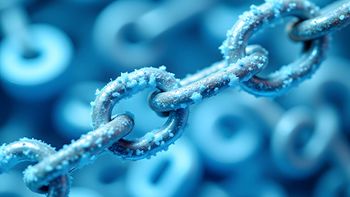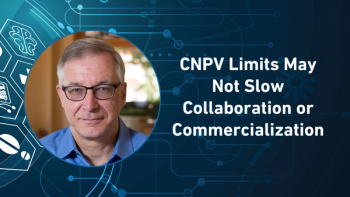
- Pharmaceutical Commerce - July/August 2017
Managing employee training at the enterprise level
The case for a single enterprise-wide learning management system
Pharmaceutical companies are all trying to advance the health
and well-being of people through their products and services in a way that creates profitable and sustained growth for their organization. However, as these organizations grow and work to achieve these goals, they are faced with ever-increasing layers of complexity within their business. This is especially true with the introduction of new products, technologies, facility expansions, emergence into new markets, and the management of mergers and acquisitions.
Added to this complexity is the challenge of investing in enterprise-wide applications that support an expanding manufacturing process and value chain, as well as a myriad of other issues. This progression creates a diverse set of needs for their employees, suppliers, clinicians, third parties and even customers. These needs include compliance, development and performance across the company.
Companies could greatly benefit from the implementation of a single enterprise-wide earning management system. Unfortunately, what happens more often than not is that each department acquires and implements their own learning management system (LMS), due to the nature of their specific needs and challenges. At that point, the objective to minimize complexity and enhance the success of positive change and growth is handicapped due to disparate LMS programs across the organization. Problems arise with the lack of a cohesive solution in place, including the right mix of technology and knowledge to move people and processes from the current state to a high performing future state.
Determining the reason why a multitude of systems end up in an organization can, at a glance, appear simple. The growing and evolving departments have distinct learning and development goals, and finding a single platform that can be customized to meet these diverse goals has been a challenge.
Departmental goals may include:
- Human resources goals: build universal competencies across the organization, initiate skill development programs, manage performance reviews, help managers, and have direct reports set goals and career advancement paths.
- Sales and marketing goals: improve product knowledge, provide medical research training, drive sales performance, increase quality leads, etc.
- Corporate compliance goals: effective training to meet compliance, proof of competency, Code of Conduct training, anti-bribery training, anti-kickback awareness, HIPAA issues, satisfy all FDA requirements (including 21 CFR Part 11).
Given these very diverse yet mission-critical learning and development goals, the result is various departments acquire their own LMS that they may perceive to be helpful in the short term, but actually adds another layer of complexity that will make solving the real challenge all the more difficult. Having numerous, non-integrated, learning and development technologies in-house is actually symptomatic, in that it exposes the lack of a holistic enterprise-wide strategy for learning development.
This strategy will align not only with the overall learning and development goals, but also with the specific environment, people, processes and process-enabling technologies within the organization. Just as critical, the technology must be sufficiently advanced to adapt to the specific needs of each department.
Solving the GxP qualification challenge
A significant challenge with pharmaceutical companies often lies with the strict data integrity requirements of US and EU regulations. Companies are required to ensure that anyone involved in the design and production of the products is qualified for their role. In addition, regulatory agencies globally require that the workforce be educated on GxP concepts, as well as SOPs and work instructions based on their specific role in the organization.
Addressing this need is typically outside of the HR auspices and falls under Quality Assurance. It demands an LMS that supports the following five regulatory requirements around GxP training and qualification:
- Audit trails: 21 CFR Part 11 requires the "use of secure, computer-generated, time-stamped audit trails to independently record the date and time of operator entries and actions that create, modify or delete electronic records."
- Electronic signatures: According to 21 CFR Part 11, signed electronic signatures and handwritten signatures executed to electronic records shall be linked to their respective electronic records to ensure that the signatures cannot be excised, copied or otherwise transferred to falsify an electronic record by ordinary means.
- Security roles: Life sciences organizations demand extremely tight security roles so that only specific individuals can make itemized system changes, such as modifying system configuration, updating training items, making assignments and much more. The LMS must provide the ability to define very granular security roles based on different functions they will need as managers, trainers and IT personnel, so that managers can only see qualifications of their direct reports.
- Role-based assignments: the LMS must support the creation of role-based groups and assignments to these groups. This greatly reduces the reliance on manual and administrative reviews to determine which personnel are qualified for a specific job function. Role-based functionality also leads to more successful audit answers when job qualifications are raised. And managers also gain visibility into qualifications for resource planning purposes.
- Integration with key GxP systems: The LMS needs to support SOP version control, for example, so that the QA team can successfully “up version” an SOP in the document management system (DMS) so that a new training item is created automatically in the LMS.
Balancing training programs companywide
FDA has some clear expectations for training. For instance, they require that each employee receives the appropriate education, training and experience (21 CFR 211.25) in the operations the person performs. In order to ensure this is happening, the company should establish procedures for identifying training needs and assuring all personnel are adequately trained to perform responsibilities. The responsibility is not only on the shoulders of the learners, however. The trainers should be qualified. One of the fundamental elements of a training program is that the training not be a once-and-done event, it should be conducted on a continuing basis to ensure employees remained trained and are up to speed on new or revised regulations and procedures. Furthermore, all of this needs to be documented in an air-tight, audit-proof format. That is where a single-enterprise LMS shows its true value. This way, all departments can use one system, regardless of whether they are required to follow the higher-level regulatory requirements or the company’s own guidelines.
To ensure technology adoption and requirements are properly met, companies should have a strategic road-mapping plan in place, establish a governance system, and have a departmental development goal-setting initiative. These will help ensure technology adoption and requirements are met properly across the board. HR will develop goals to measure performance and provide career advancement opportunities to ensure employee retention and employee engagement. At the same time, their goals will capture the department’s need to provide and measure “technical skills,” and to improve an individual’s competency ratings. Quality Assurance will need to track a role-based qualification matrix, as these records are scrutinized by FDA and other global regulatory bodies during inspections.
The enterprise-wide learning system should provide an adaptive user experience that supports “universal” competency programs and performance management programs that HR can deliver to employees.
Such a solution provides many benefits:
- A single login experience that provides a positive learning and development experience for all employees and contractors. Company culture contributes to the identity and pervasive values of and within an organization. For example, if setting and meeting goals is inherent to the culture, both management and employees will have a natural inclination toward setting and meeting goals. Training is something that should qualify as a critical element of company culture and one login to one program that approaches training in the same way across the company will help create a consistent and cohesive vision for the organization.
- Each department gains the functionality they need to accomplish their goals. People learn in different ways; one popular theory, called the VARK model, identifies four primary types of learners: visual, auditory, reading/writing, and kinesthetic. An LMS that follows best practices will enable each of these principles. Not only will each department have the flexibility to provide the training that is specifically needed to meet their goals, standards and regulations, but it will provide each individual a way to receive training in an effective format.
- Corporate HR and talent executives gain a single, powerful view into an individual's readiness ratings, comparative profiles, potential and overall performance over time. The adage, “What gets measured gets managed” has significant meaning when it comes to learning. By being able to track quantitative and qualitative measurements across the enterprise, the company can better know where the red flags are and where they need to improve.
- Companies can reduce their investment in multiple learning management systems, and reduce IT effort to deploy these systems. Companies are seeking to improve efficiency and reduce redundancy. Having a single LMS system brings efficiencies that supporting multiple systems could never provide.
- Integration with critical systems such as MES, DMS, ERP and HRIS is managed more efficiently. Integrating these other enterprise systems with an LMS multiplies the effectiveness and reporting power of all systems. When a CRM and LMS are used separately in a silo, the reports generated offer only a fractional view of an individual’s performance. By combining the data and information from multiple systems, the outcome and insight is exponential, and far richer data can be leveraged to improve results along the spectrum. Proper integration can also remove redundant manual efforts that can be time-consuming and labor-intensive.
- Compliance risks can be minimized, as employees are tracked across all areas, and “compliance education overlap” is greatly reduced. When a company is reducing risk by aligning with standards and complying with regulations, those responsible for compliance training will push out training focused on changing rules, regulations and policies. If the curriculum is not centralized, then redundancies, and even gaps, can emerge that can threaten the effectiveness of the program and introduce risk.
Timely analysis of the curriculum that is customized by department and realigned when necessary will help ensure that proper training is being given to the right people at the right time.
Perhaps the most important benefit from an enterprise-wide learning system and balanced training system is that managers can conveniently share data across the enterprise, especially in areas of career development and compliance status. What this does is provide decisionmakers with better data and greater insights—within a unified and cohesive system environment. With a single solution, leaders can visualize relationships and patterns between operational and business activities in new and extremely valuable ways. Companies will more effectively see connections to problems and solutions as they are unfolding. In highly regulated business environments, finding these correlations, the single appropriate enterprise-wide learning plan and the ideal LMS solution is more important than ever.
ABOUT THE AUTHOR
Isabelle Noblanc is vice president and general manager of UL Compliance to Performance.
Save
Articles in this issue
over 8 years ago
Pharmaceutical traceability stumbles aheadover 8 years ago
Digital factory transformation beyond serialization complianceover 8 years ago
Blockchain: the technology to make DSCSA work after 2023?over 8 years ago
Besse Medical acquires Podisover 8 years ago
DHL opens a cold-chain center of excellence in Irelandover 8 years ago
Construction starts on a Pfizer biopharma plant near St. Louisover 8 years ago
Looking ahead in life sciences and healthcare logisticsover 8 years ago
Pharma’s cold chain is going below zeroNewsletter
Stay ahead in the life sciences industry with Pharmaceutical Commerce, the latest news, trends, and strategies in drug distribution, commercialization, and market access.





